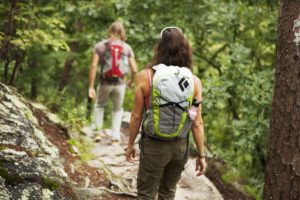Dehydration in the Backcountry

When presented with injury or illness in the backcountry, be on the lookout for dehydration. We simply don’t drink enough fluids; in the backcountry it becomes difficult to find, laborious to purify, and heavy to carry. As guides, we know better than this, and it is still found that we neglect to take in enough fluids. When trekking with the public – don’t assume they are aware of the possibility of dehydration. Be prepared to recognize signs of dehydration from the beginning.
Minor dehydration commonly presents itself as chapped lips, darker colored urine, headaches, constipation, mood changes, and perhaps the most obvious, thirst. Here is how you can prepare for and reduce the risk of dehydration when leading a group.
- Carry a couple of water bottles, your preferred water purification method*, and electrolyte powder. If possible, communicate with and have the rest of your group do the same.
- Take frequent hydration breaks, reminding your group to drink & leading by example. Remember that the “Do as I say, not as I do” mentality is not effective in this scenario.
- Plan ahead by knowing reliable sources of water along your trip route. Carry extra water when needed, but if you know more is available nearby, lighter is better.
- Purify your water, Unclean water may result in vomiting and diarrhea, hastening dehydration.
And remember:
Fluids = Water + Electrolytes
Water alone can lead to Hyponatremia, or washing too many salts and nutrients from the system. Frequent, colorless urine output is a symptom of Hyponatremia.
Minor dehydration is common but can turn severe, or even fatal, quickly. It is easier to prevent dehydration than to fix dehydration. And remember, the outdoors are more enjoyable when your lips are not chapped, you don’t have a headache, and vomiting and diarrhea are not present!
*The CDC’s Guide to Drinking Water Treatment Methods for Backcountry and Travel Use
